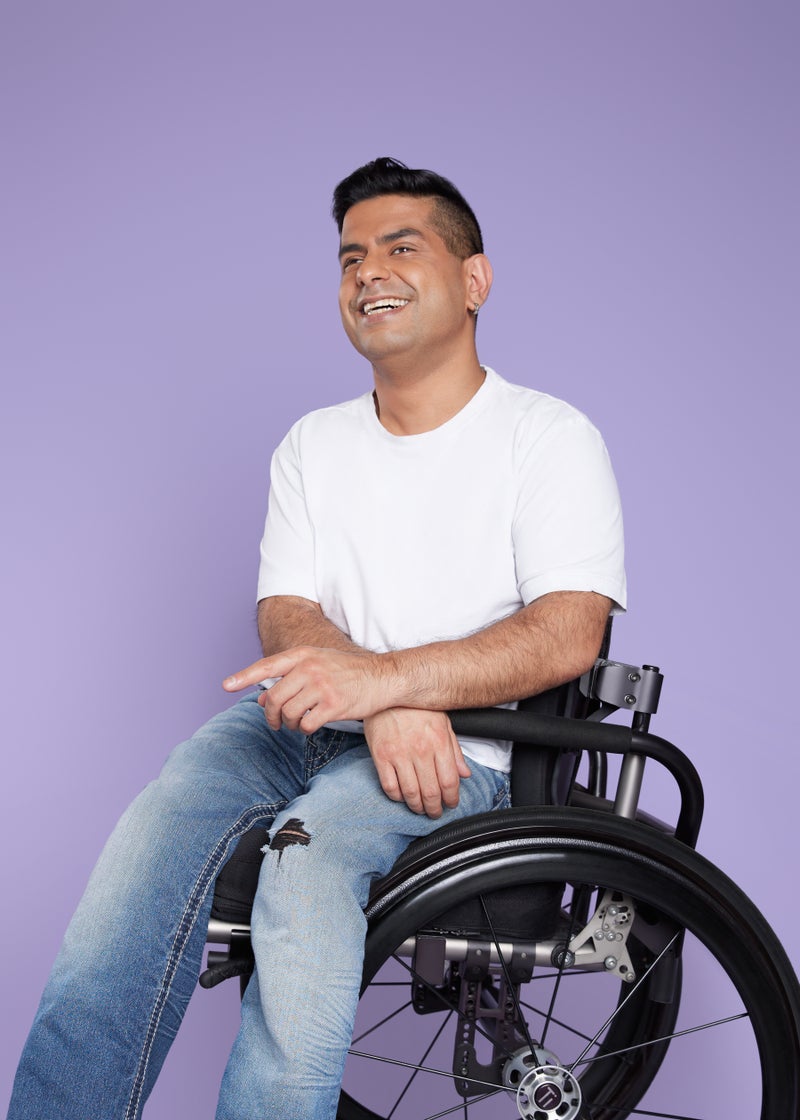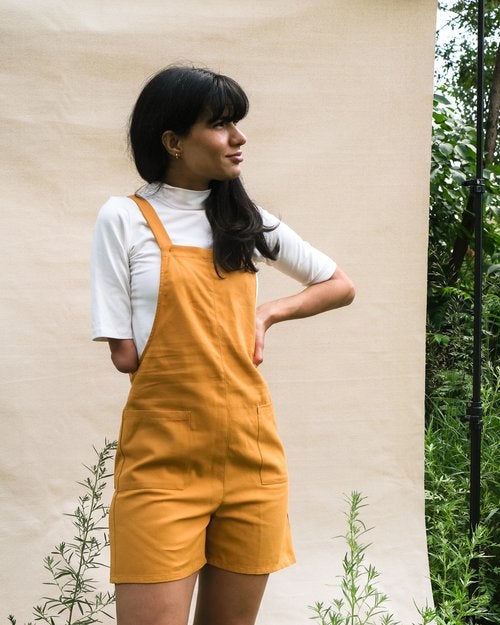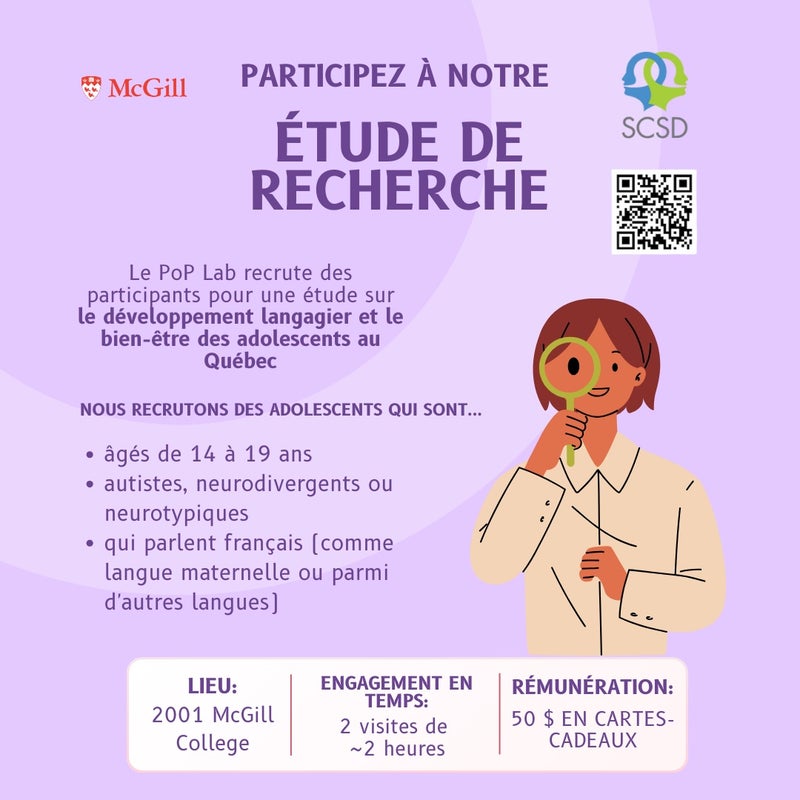The fashion industry is becoming inclusive

It’s no secret that the fashion industry has historically been incredibly ableist. Very few visually disabled people have been showcased in magazines, campaigns or TV commercials. We are now witnessing change in this industry, with the movement growing in our current century. Inclusiveness of models with a visible disability slowly on the rise.
At the local level, Mackay Center School held their first fashion show in 2022, and Summit School held fashion shows in 2023 and 2024. These two shows suggest that the fashion industry should be prepared to run with this new concept and embrace diversity and inclusion.

Model Aleem Jaffer, taken at a headshot session with photographer Tilly Nelson in Edmonton for Kello Inclusive Talent.
Photo: Tilly Nelson (tillynelson.com/inclusion)
Katie MacMillan, an Edmonton mother of a disabled child, realized there was a gap in representation and advocacy for disabled models. In 2022, she created Kello Inclusive, a (instead of the only) Canadian modeling and talent agency to exclusively represent people who are disabled. MacMillan’s goal was to increase acceptance in the fashion industry. The agency has hubs in Vancouver, Calgary, Winnipeg, Toronto and Montreal and over 50 models from across the country (Source: CTV News Edmonton 2022).
Historically, the movement to include models with visual disabilities on the runway was not an easy path. More often than not they were not accepted in the fashion industry. In 2017, two sister-in-laws, Zoe Proctor and Laura Johnson, having work experience with this population, were frustrated because disabled models weren’t gaining access to opportunities in the same way that non-disabled people were. They took action, creating U.K based modeling and acting agency Zebedee, focused exclusively on disabled models in the U.K. They were confronted by numerous casting directors and brands who were not open to accepting their models.
After much persuasion they started to see the value in including people with disabilities in their campaigns. (Source: Voices of Disabilities, edited by Kelly Dawson, a disability advocate who was born with cerebral palsy. (https://www.refinery29.com/en-ca/2020/07/9932518/models-with-disabilities-fashion-zebedee-management).
Trail blazers of the movement, Zebedee is now in the UK, Europe, USA, and Japan. They work with talent all across Europe, with central hubs located in Paris, France, Italy, Germany, Netherlands, Spain, Australia and Japan, and some of the world’s most iconic brands – including Gucci, Burberry, Mercedes, Vogue, Estee Lauder, Disney, BBC and HBO (www.zebedeetalent.com/eur).
While this exciting new movement is growing around the globe, social and physical barriers still need to be removed. People in the fashion world continue to have difficulty accepting disabled models and making it accessible to them.
Runway of Dreams Foundation produces adaptive runway shows that celebrate inclusion, highlight change in the fashion industry and empower people with disabilities. They held an adaptive fashion show at New York Fashion Week in September 2023. They featured brands such as Zappos, Steve Madden, Tommy Hilfiger, Kohl's, Target and for the first time, Victoria’s Secret and PINK. (Source, and to read more: www.runwayofdreams.org)

Gazelle Mir, taken at a clothing brand photo shoot with atelier b in July 2023.
There are also a handful of professional disabled models such as Aaron Rose Philip and Chris Ruden who are using their platform to advocate for greater diversity in the fashion industry. In an interview with Lizzie Hyman from People Magazine, September 14, 2023, Ruden expressed the following sentiments: “I hope that we don't have to talk about diversity, equity and inclusion because it's normal. We don't have to force the subject of getting people to come together. That disability is not a bad word anymore. There's no more stigma.”
Ultimately it is hoped that we will see professional, able-bodied and visually disabled models walking and rolling on the same runway together.
For more information about Kello Inclusive here in Canada, visit: https://www.kelloinclusive.org/ or









